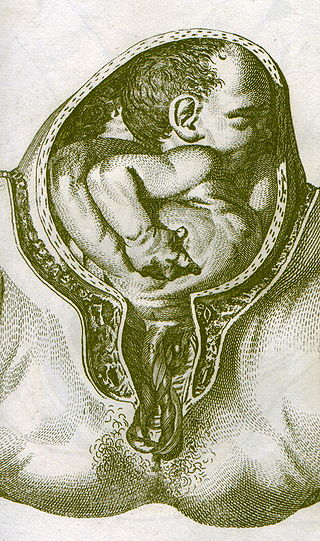Umbilical cord prolapse occurs when the umbilical cord comes out of the uterus with or before the presenting part of the fetus. It is a relatively rare condition and occurs in fewer than 1% of pregnancies. Cord prolapse is more common in women who have had rupture of their amniotic sac. Other risk factors include maternal or fetal factors that prevent the fetus from occupying a normal position in the maternal pelvis, such as abnormal fetal lie, too much amniotic fluid, or a premature or small fetus.
The concern with cord prolapse is that pressure on the cord from the fetus will cause cord compression that compromises blood flow to the fetus. Whenever there is a sudden decrease in fetal heart rate or abnormal fetal heart tracing, umbilical cord prolapse should be considered. Due to the possibility for fetal death and other complications, umbilical cord prolapse is considered an obstetric emergency during pregnancy or labor. Current management guidelines focus on quick delivery, which usually entails a cesarean section. With appropriate management, the majority of cases have good neonatal outcomes.

Cord prolapse, by W.Smellie Public Domain
Umbilical cord prolapse. (2016, February 14). In Wikipedia, The Free Encyclopedia. Retrieved 21:23, February 14, 2016, fromhttps://en.wikipedia.org/w/index.php?title=Umbilical_cord_prolapse&oldid=704988917
